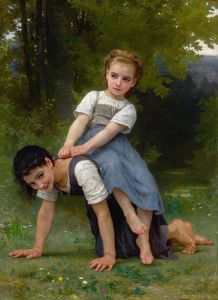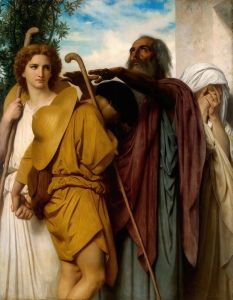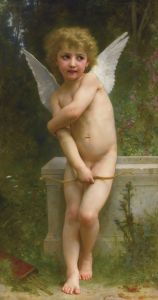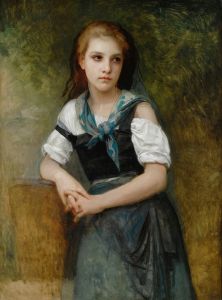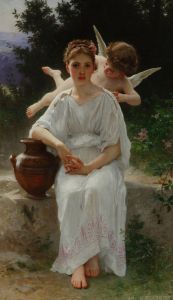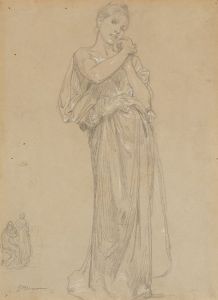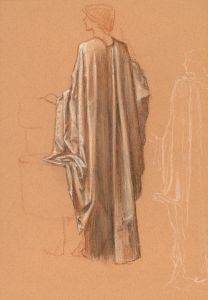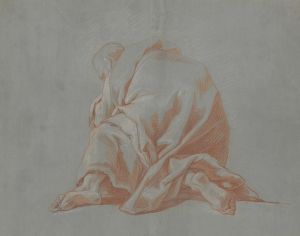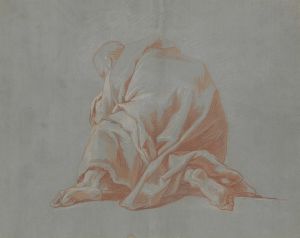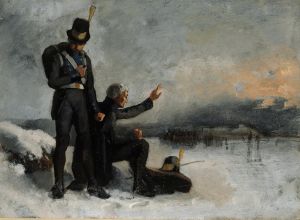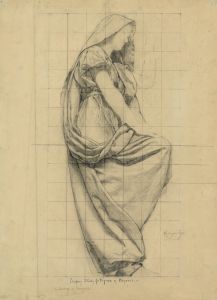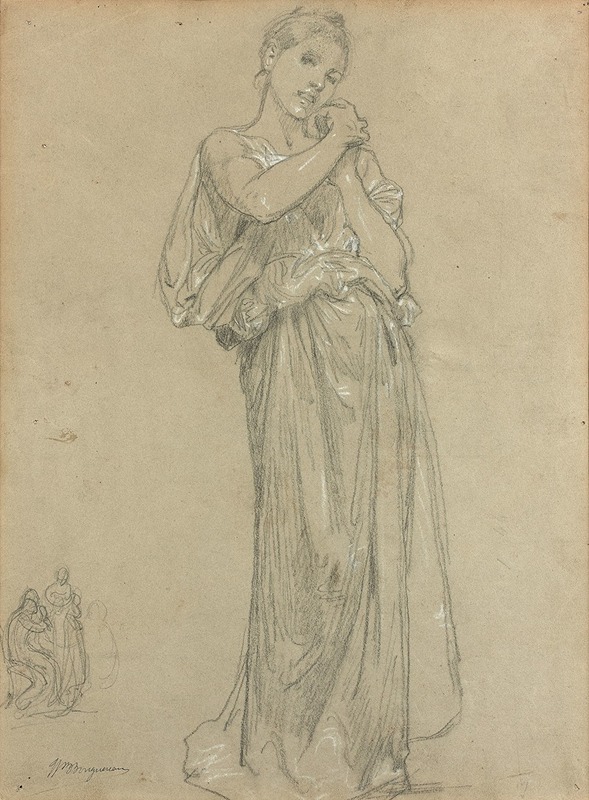
Jeune fille drapée et un groupe de figures, étude pour ‘Premiers bijoux’
A hand-painted replica of William Bouguereau’s masterpiece Jeune fille drapée et un groupe de figures, étude pour ‘Premiers bijoux’, meticulously crafted by professional artists to capture the true essence of the original. Each piece is created with museum-quality canvas and rare mineral pigments, carefully painted by experienced artists with delicate brushstrokes and rich, layered colors to perfectly recreate the texture of the original artwork. Unlike machine-printed reproductions, this hand-painted version brings the painting to life, infused with the artist’s emotions and skill in every stroke. Whether for personal collection or home decoration, it instantly elevates the artistic atmosphere of any space.
William Bouguereau, a renowned French academic painter, created "Jeune fille drapée et un groupe de figures, étude pour ‘Premiers bijoux’" as a preparatory study for his larger work, "Premiers bijoux" (First Jewels). Bouguereau, born in 1825 in La Rochelle, France, was celebrated for his realistic genre paintings and his meticulous attention to detail, which is evident in this study.
"Jeune fille drapée et un groupe de figures" showcases Bouguereau's skill in depicting the human form and his ability to convey emotion through composition and expression. The study features a young girl draped in fabric, surrounded by a group of figures. This composition is typical of Bouguereau's work, which often included idealized figures, particularly women and children, set in classical or pastoral settings.
The study was part of Bouguereau's process to develop the final composition for "Premiers bijoux," a painting that explores themes of innocence and the transition from childhood to adulthood. In the final painting, the young girl is depicted receiving her first piece of jewelry, symbolizing a rite of passage. The preparatory study would have allowed Bouguereau to experiment with the arrangement of figures, the play of light and shadow, and the drapery of the fabric, ensuring that the final work achieved the desired emotional and aesthetic impact.
Bouguereau's technique involved creating numerous sketches and studies before executing the final painting. This meticulous approach is evident in "Jeune fille drapée et un groupe de figures," where the careful rendering of anatomy and fabric demonstrates his dedication to precision and realism. His academic training at the École des Beaux-Arts in Paris and his success at the Prix de Rome significantly influenced his artistic style, which adhered to the traditional methods of the French Academy.
Throughout his career, Bouguereau was both celebrated and criticized for his adherence to academic standards at a time when the art world was increasingly embracing modernist movements. Despite this, he remained a popular and successful artist, with his works commanding high prices and being exhibited widely. His ability to capture the beauty and grace of the human form, as seen in this study, contributed to his enduring legacy.
"Jeune fille drapée et un groupe de figures, étude pour ‘Premiers bijoux’" is a testament to Bouguereau's skill as a draftsman and his commitment to the academic tradition. While the study itself may not be as widely recognized as some of his completed works, it provides valuable insight into his creative process and the meticulous preparation that underpinned his art. Bouguereau's influence can still be seen today, as his works continue to be studied and admired for their technical excellence and timeless beauty.





